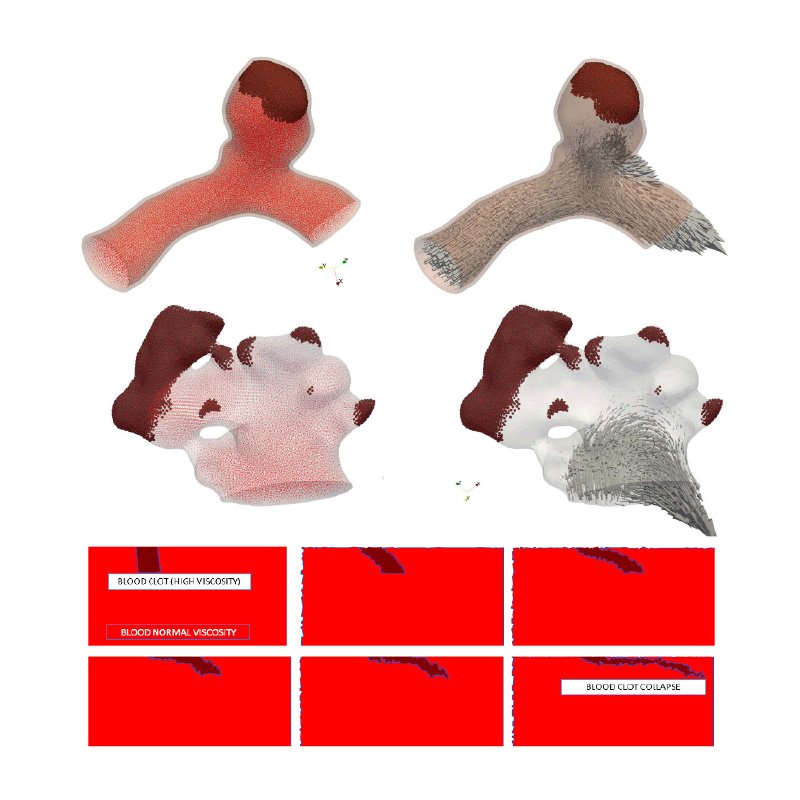
Smoothed Particle Hydrodynamics computational analysis for cardiovascular bioengineering applications
Brief description
Thrombosis is a pathology leading to thrombus formation, that can result into arterial obstructions and, eventually, migrate through the cardiocirculatory system causing heart attack, stroke or pulmonary embolism. It is a complex process whose mechanism is still unclear, due to the contribution of various factors including platelet activation and aggregation, chemical interaction of the involved reactants and hemodynamics.
Since the available analytical solutions are often inadequate and far too complex to find practical application, research is increasingly evolving towards the use of computational methods, stimulated by the recent advances in computational processing.
This study aims at analysing the formation, growth and evolution of thrombus by means of a Smoothed Particle Hydrodynamics (SPH) numerical method coupled with a fluid structure interaction (FSI) model. Contrary to standard and widely adopted Eulerian methods, SPH is a meshless Lagrangian approach. This makes it particularly suitable to realistically capture the multi-physical interaction between blood flow and thrombi. Moreover, FSI coupling allows to study platelets aggregation by means of internal particle attractive forces. Concentration of the biochemical species involved in the process can be modelled by advection-diffusion equations.
This project involves the participation of Dr Alessandra Monteleone (Ri.MED) and Dr Alessia Viola (Ri.MED and University of Palermo).
Impact:
Thrombosis is a relevant problem in the design and implementation of vascular protheses and artificial organs such as artificial heart valves. The main challenge for prevention and treatment of this pathology is represented by the poor knowledge of the mechanisms involved. The study of the hemodynamics can provide an effective support to identify and prevent the risk of thrombosis.
This research project aims to implement a numerical platform to support the diagnosis and treatment of cardiovascular diseases by simulating hemodynamics and thrombus formation.
In future, employing patient-specific models, this diagnostic tool could support the development of new devices by allowing the evaluation of their performance, safety and potential improvements, prior to prototyping. Furthermore, the accurate modelling of several pathologies (such as atrial fibrillations) would provide further clarifications and indications for their mitigation and treatment.
Pipeline
-
CLINICAL
NEED -
DISEASES
ANALYSIS - DISCOVERY
-
PRECLINICAL
VALIDATION -
PRECLINICAL
DEVELOPMENT -
CLINICAL
STUDIES

Principal Investigator
Contact
Therapeutic area:
Products:
Biomarkers – medical devices & tissue engineering
Collaboration:
- Università degli Studi di Palermo, Palermo, Italy
- University College London (UCL), Londra, Regno Unito
Scarica il pdf del progetto
